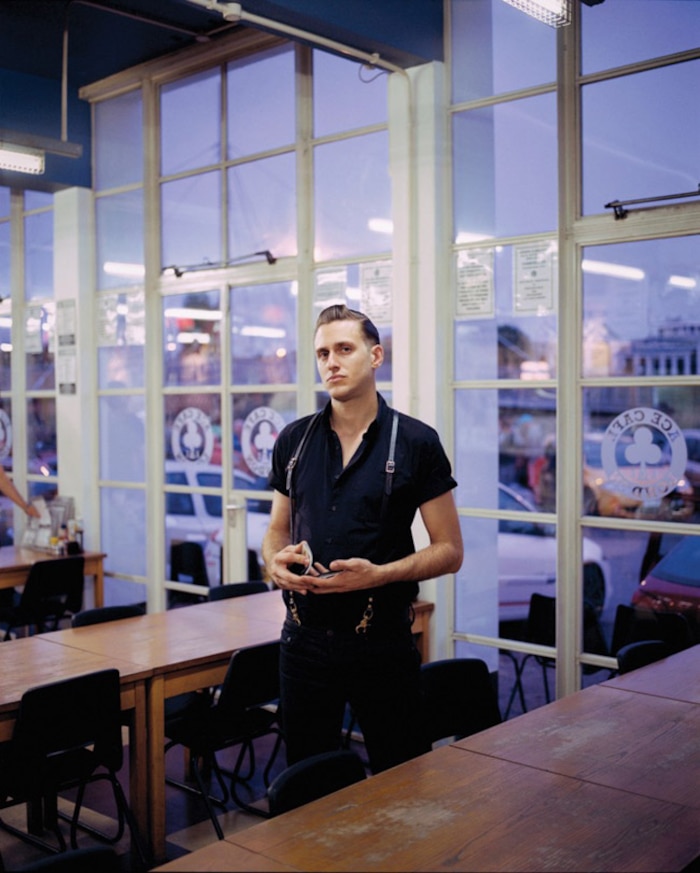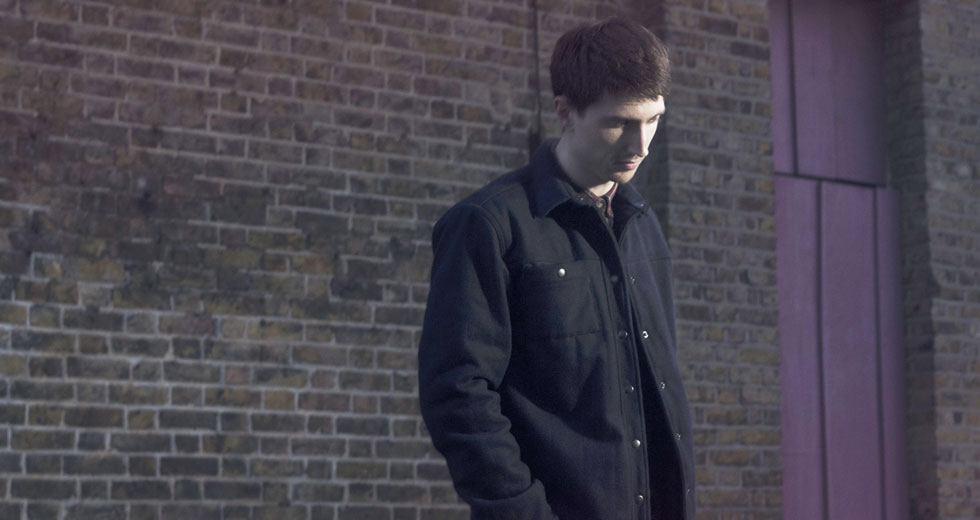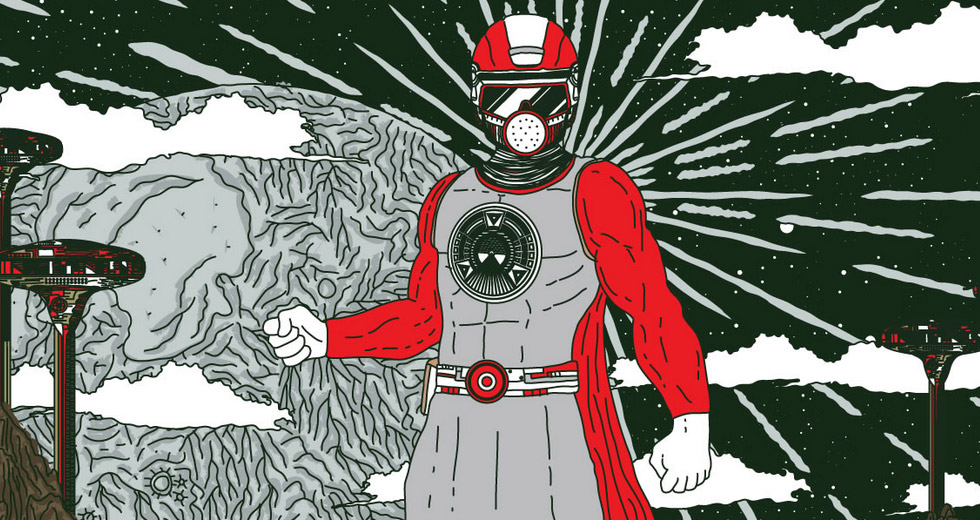Interview: Drop The Lime
Trouble & Bass label head and new-wave psychobilly Drop The Lime continually has his hands in many pies, from producing for the likes of Spank Rock and Bosco Delrey to working on his own accessories line to drinking whiskey in every dive and afterhours from here to the Bermuda Triangle. A life-long New Yorker, he grew up in Tribeca right next door to the firehouse that was featured in Ghostbusters. A fellow member of Trouble & Bass, Vivian Host, asked him a few questions about growing up in the city and how darkness inspires his music as she was writing this similarly themed piece for The Daily Note.

Having grown up in New York, do you think there’s a connection between this place and making music that’s darker or harder? Or is it more derived from you as a human being?
I do believe that growing up in a city like New York – a city that revolves around nightlife and comes alive when the sun goes down – has always been a strong influence on me creatively. Just even something as simple as growing up in downtown Manhattan and being surrounded by high-rise buildings; when it became dark, all these new lights would come on from all the Battery Park city buildings, and the Twin Towers when they were there… They had a strong connection to me. I found excitement in the darkness.
You lived in Berlin, you were in New Orleans for a while… Did various locations make you create different sounds than you would have in New York?
I’ve always found that changing your comfortable environment can spark new creative ideas. New Orleans had a similar 24-hour party vibe, an artistic vibe, to New York but had a different edge – like, it had this soulful kind of Southern voodoo vibe that doesn’t exist here, and almost more of a country feeling. Berlin had a more sparse, empty warehouse vibe that influenced different ideas. Somewhere like New York is very crowded and thrives on people, while in Berlin, my creative inspiration was from sparseness and weird desolate energy.
What are some of the things that you are presently being inspired by?
Currently, the renegade afterhours warehouse vibes of Brooklyn have been very inspiring. I love that spontaneous approach to taking a random space that’s a little bit dangerous and throwing a party there, and recreating as much as possible the vibe of a Berlin warehouse or the way old-school raves used to be in New York.
I feel like the palette of a lot of music from New York – not all of it, because obviously there’s stuff like Holy Ghost! and Tanlines that’s very bright-sounding – is often something raw and darker, like when you think about the difference between, say, Dr. Dre and Wu-Tang Clan.
In New York, it seems like artists play with the romance of darkness, and even the edginess of it still has a comedy.
Yeah, it’s grittier here. I think that the role of seasons actually plays a big part in it. On the West Coast, you have sunny weather all year round. Here we have more months that are cold and it gets darker sooner; and then when it does get warm, people kind of explode with joy and excitement. That whole time during the year when it’s winter and it’s bleak allows us to be creative and think within ourselves. When you’re going out to hear music, or to have an adventure with fellow peers and whatnot, you’re doing it together. Basically, if you’re going out, and it’s dark out, it’s freezing, and it’s bad weather, you’re on a mission to spend the night together and be inspired.
But yeah, I think also that things like Wu-Tang and punk and electronic music from New York have always been a bit dark because here you’re on the streets and you’re experiencing the culture firsthand, in a sense. Whereas on the West Coast, you’re driving a lot, you’re all in your own environment. In New York, you’re actually in it – walking around, walking everywhere, having homeless people bump into, people bother you, random things like that. In West Coast cities, you’re kind of protected in your own bubble. You’re listening to your own music, you’re in your own environment, while in New York, you’re exposed to everyone’s environment and you’re all sharing it together.
The palette of sounds and the way a dark aesthetic manifests itself in New York is different to somewhere like Berlin or London. Do you agree?
Definitely. In a way, it’s almost like New York has a playful darkness. The darkness of, like, German electronic groups, it’s almost a little bit scary to me. Industrial music, for example, or early EBM. In New York, it seems like artists play with the romance of darkness, and even the edginess of it still has a comedy. To go back to someone like Wu-Tang, they’re dark and they’re evil – someone like Method Man used to look really scary – but then they’d have these funny sketches on their CD. They were still a little bit comedic, in a jester type of way, while a lot of the European music that’s dark seems very serious and very haunting.
Trouble & Bass, even in its more ravey days, has often explored a darker or harder side of bass music.
Having a background of like, punk music, of rock ‘n’ roll, of extreme electronic music… I mean, it’s all about extreme emotion. It’s all about that aggressive, no-limit kind of attitude that leads you to be attracted things that are darker, things that are not safe. I think darker things have a mystery to them and are open to more interpretation than something that is obviously poppy or happy.
In interviews, you’ve talked about Trouble & Bass being the antidote to all the kind of “polite” disco stuff that was inundating NYC around the time the crew started and you have often incorporated darker themes into the artwork of the label and parties.
I made an animation for Trouble & Bass of different comic characters vomiting rainbows.
I don’t even think it was on purpose. It just happened to be what we were aesthetically drawn towards. I’d even prefer the aesthetic of a horror-movie poster versus watching a horror film. I’m attracted to that darkness, the edginess of it, even more so than the actual story or plotline of a horror film.
Some people are speculating that this whole dark aesthetic that’s popular now is about to be over and the trend is going to be positivity and bright colors and ’90s PLUR again really soon.
A long time ago, I don’t know if you remember, but I made an animation for Trouble & Bass of different comic characters vomiting rainbows. It was a visual that we would have at our parties, an animated loop. It was like Dora the Explorer with a backpack that had a face on it, and it was like a vomiting backpack, and she was throwing up, but they were rainbows. I still have it somewhere. And then there was Street Fighter. It was like, Ken and Ryu, and they were like [makes retching noise], and then there was a smiley rave face vomiting a rainbow. I guess, basically, that was our way of bringing in the PLUR but keeping the darkness.

